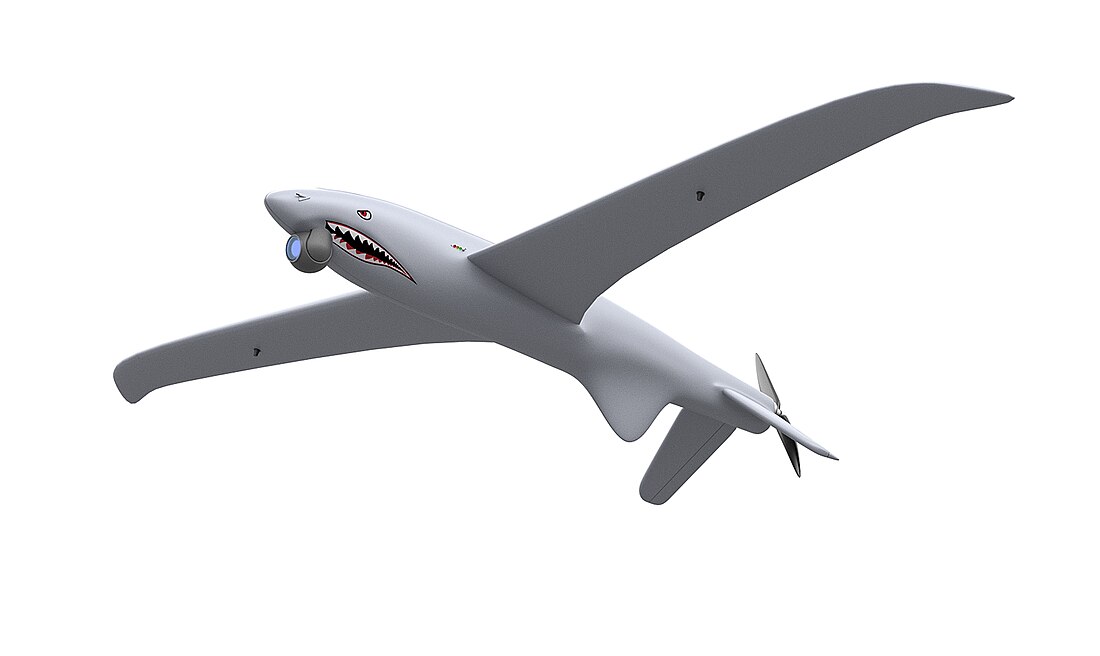Top Qs
Timeline
Chat
Perspective
Ukrspecsystems Shark
Ukrainian unmanned aerial vehicle From Wikipedia, the free encyclopedia
Remove ads
SHARK (Ukrainian: ШАРК) is a Ukrainian unmanned aerial vehicle created by the Ukrspecsystems company[2] for monitoring and adjusting fire on the battlefield. The UAV is equipped with a communication module using AES256 encryption, which allows it to penetrate into the enemy's rear up to 80 km under EW conditions. The Full HD optical-electronic surveillance complex with 30× optical magnification and an additional 3× digital zoom enables surveillance at a distance of up to 5 km from the drone to the target.[3]
Approximate cost - US$325,000 (Three UAVs and a vehicle with a command post).
Remove ads
Description
Shark combines the war-tested technologies and experience of using larger operational-tactical UAVs of the PD-1 and PD-2 series in combat conditions. The UAV is launched from a catapult and has an operational range of up to 80 km, rising to a height of up to 3,000 meters. Its maximum speed is 130 km/h, cruising speed is 75 km/h, stall speed is 60 km/h. Landing is carried out using a parachute.
UAVs are able to adjust large-caliber artillery for a long time, resistant to EW countermeasures and difficult weather conditions. It is possible to operate multiple units from a single station.
The complex of BpAS "Shark" includes:
- 3 UAVs
- Ground launcher
- Additional equipment
Remove ads
History of creation
The Ukrspecsystems company began work on the Shark UAV in the face of a full-scale Russian invasion on February 24, 2022, and flight tests began less than six months later.[4]
Specifications[5]
Camera system
Different video recording modules can be installed on the aircraft: USG-231 and USG-231-T.
Operators
Combat use
In 2022, Serhiy Prytula Charity Foundation announced the purchase of a SHARK UAV for Ukraine's Armed Forces. By 2023, they had acquired three SHARK systems. On November 1, 2022, OKKO and the "Come Back Alive" Foundation initiated[6] a fundraiser to buy 25 SHARK systems, totaling 325,000,000 UAH or 13 million UAH per system.[7] These systems include 75 UAVs, 25 Torsus vehicles from Pulsar Expo with control points, and 25 launch setups. A notable project involved retrofitting the Torsus Terrastorm vehicle for remote piloting. This upgraded vehicle is optimized for wartime, offering efficient operations in any weather and rapid deployment.[relevant?]
Remove ads
See also
References
Wikiwand - on
Seamless Wikipedia browsing. On steroids.
Remove ads

